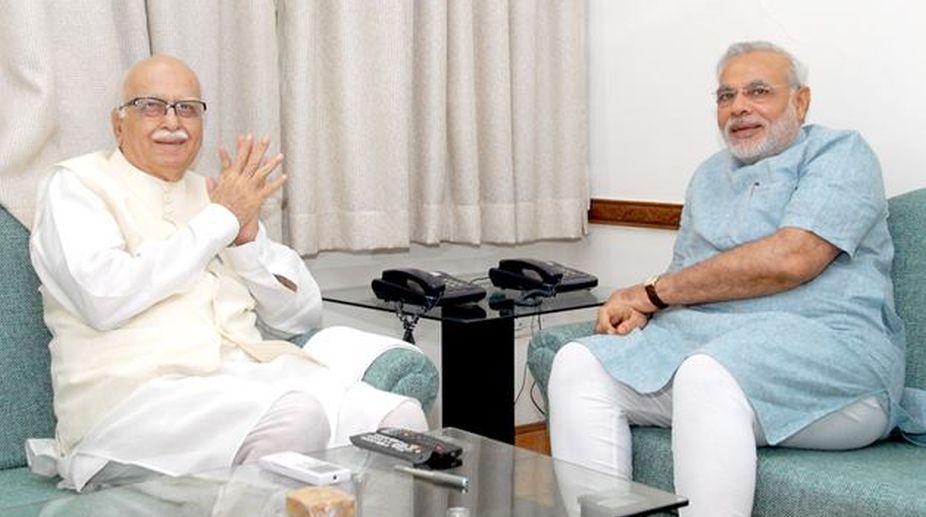Modi, Rahul speak in the same tone while criticising Kerala: CM Vijayan
Pinarayi Vijayan said the negative remarks of Narendra Modi and Rahul Gandhi against the state sound the same.

(Photo: Facebook)
The ruling BJP has travelled a long distance since 1980 when the party was founded as the political wing of the RSS. In 27 years it has overtaken the Grand Old Congress Party, which had ruled the country for 58 of the 70 years after independence.
The BJP emerged in 2015 as the largest party in India with about ten crore members while the Congress has been shrinking.
The Communist Party of China was until now considered the largest party with about 8.60 crore members. The BJP grew from two seats in the Lok Sabha in 1984 to 85 in 1989 and rose to 120 seats in 1991 and 198 in 1998. The BJP formed the government in 1996 for thirteen days but fell because no other party supported it. The BJP’s first phase of success came when L K Advani successfully launched his Ram Janambhoomi movement in 1989. The second was when Vajpayee became the prime minister (1998-2004) leading the NDA coalition.
Advertisement
The third phase began when Narendra Modi as chief minister became a Hindutva icon after the Godhra carnage in 2002. The peak came when the BJP emerged as the single largest party in the Lok Sabha in 2014 winning 282 seats and formed the government with its other NDA partners, a feat indeed after 30 years of coalition governments at the Centre.
The BJP is ruling in 19 states – either on its own or in coalition – while the Congress is reduced to just five states. But the latest is its emerging as the single largest party in the Rajya Sabha where the Congress-led opposition had been blocking most government business frustrating the BJP in the past three years.
But the NDA is yet to get a majority in the upper house. This week the BJP has overtaken the Congress, which had 57 members, by gaining one seat more than the Grand Old Party.
A big boost will come next year when the BJP will win eight of nine Uttar Pradesh seats that will be vacated, after sweeping assembly elections in the state this year. Next week, elections will be held for nine seats – six in west Bengal and three in Gujarat. But these may not affect the BJP lead.
The party is sure to win two seats in Gujarat and is eyeing the third seat by defeating Congress leader Ahmed Patel who is contesting for the seventh term. In West Bengal two Congress members are retiring but the Congress can get only one seat while the ruling Trinamool Congress will get five seats.
The BJP has also occupied for the first time all top four Constitutional positions with the election of President Ramnath Kovind, Vice President M.Venkaiah Naidu, Prime Minister Narendra Modi and Lok Sabha Speaker Sumitra Mahajan. How did the BJP achieve all this? The BJP’s growing dominance is surprising in a country that was historically dominated by Centre-Left parties since independence.
Historically, the Congress started out as a left of centre party and moved further leftward in the 1960s and seventies. Its main competitors then were mostly the Communist Parties. However, leftism eventually failed due to many reasons though the Congress Party survived because it moved back toward the centre.
At the national level, the Left presence is minimal. Today the Left parties are ruling in only two states – Tripura and Kerala. The CPI-M and the CPI also supported the National Front, the United Front and the UPA governments at the Centre. The BJP now has a pan-Indian presence and the party, either by itself or in coalition, rules states in the South, North, North east and West.
Seven decades of left of centre Congress politics has given way to the right wing BJP. The party has adopted various methods to reach its goals. It got acceptance among voters.
It has adopted a method of breaking up other parties and coalitions. The recent breaking up of the Grand Alliance in Bihar has helped the NDA increase its tally with the addition of the Nitish Kumar-led JD (U) to the NDA last month. This will add another ten members to the NDA kitty. With the JD (U) allying with the BJP, the Modi dispensation can now expect the support of at least 121 members in the 245-member upper house.
Regional parties like the AIADMK, the BJD, the TRS, the YSRCP and the INLD, which together have 26 members, have often backed the government, which can also count on at least four of the eight nominated members for support. Thirdly, it has imported senior leaders from other parties to win elections as it did in Assam. Fourthly, it has taken over an entire state like Arunachal Pradesh without having a single MLA.
Fifthly, it has encouraged defections from other parties. Above all, it has weakened the already weak opposition. Union Finance Minister Arun Jaitley, who is also Leader of the House in the Rajya Sabha, claims that the BJP becoming the Number 1 party is a "natural consequence of our support base increasing".
He said, "We are in power in most states and since the Rajya Sabha is a council of the states, the strength of the BJP has to be reflected." The minister was confident that his party's "base will increase in every election".
Advertisement